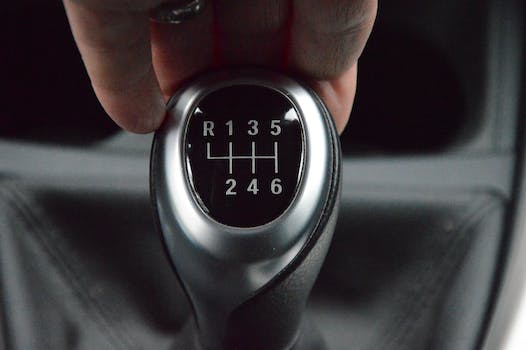
The Revival of Manual Transmissions: Driving Experience Redefined
-
Table of Contents
- Introduction
- The Benefits of Manual Transmissions: Why Drivers are Choosing to Go Back to Basics
- The Rise of Manual Transmissions: How the Driving Experience is Being Redefined
- The Pros and Cons of Manual Transmissions: What You Need to Know Before Making the Switch
- The Future of Manual Transmissions: What Automakers are Doing to Make Them More Accessible
- The Revival of Manual Transmissions: How They’re Changing the Way We Drive
- Q&A
- Conclusion
“Experience the thrill of driving with The Revival of Manual Transmissions: Redefining the Art of Driving!”
Introduction
The manual transmission is making a comeback in the automotive industry. With the rise of technology, many drivers have become accustomed to the convenience of automatic transmissions. However, manual transmissions offer a unique driving experience that cannot be replicated with an automatic. Manual transmissions provide drivers with greater control over their vehicle, allowing them to customize their driving experience. Additionally, manual transmissions are often more fuel-efficient than their automatic counterparts. As a result, the revival of manual transmissions is redefining the driving experience for many drivers.
The Benefits of Manual Transmissions: Why Drivers are Choosing to Go Back to Basics
In recent years, manual transmissions have been making a comeback. While automatic transmissions have been the go-to choice for many drivers, manual transmissions are becoming increasingly popular for their many benefits. Here, we’ll explore why drivers are choosing to go back to basics and opt for manual transmissions.
One of the main benefits of manual transmissions is that they are often more fuel-efficient than their automatic counterparts. Manual transmissions require less energy to operate, meaning that they can help drivers save money on fuel costs. Additionally, manual transmissions are often more reliable than automatic transmissions, as they have fewer moving parts and require less maintenance.
Another benefit of manual transmissions is that they offer drivers more control over their vehicles. With a manual transmission, drivers can choose when to shift gears, allowing them to adjust their speed and acceleration as needed. This can be especially helpful when driving in challenging conditions, such as on steep hills or in heavy traffic.
Finally, manual transmissions can be more fun to drive than automatic transmissions. Many drivers enjoy the feeling of being in control of their vehicle and the satisfaction of mastering the art of shifting gears.
Overall, manual transmissions offer a number of benefits that make them an attractive option for drivers. From increased fuel efficiency to more control over their vehicles, manual transmissions are becoming increasingly popular for their many advantages.
The Rise of Manual Transmissions: How the Driving Experience is Being Redefined
In recent years, manual transmissions have seen a resurgence in popularity, as drivers seek out a more engaging and rewarding driving experience. While automatic transmissions have been the norm for decades, manual transmissions are now being embraced by drivers of all ages and backgrounds.
Manual transmissions offer a number of advantages over their automatic counterparts. For starters, they provide a more direct connection between the driver and the car, allowing for greater control and precision when driving. Manual transmissions also tend to be more fuel-efficient than automatics, as they require less energy to shift gears. Finally, manual transmissions are often less expensive to repair and maintain than automatics, making them a more cost-effective option for drivers.
The driving experience with a manual transmission is also quite different from that of an automatic. Manual transmissions require the driver to manually shift gears, which can be a more engaging and rewarding experience. This allows the driver to be more in tune with the car, as they are able to feel the engine’s power and torque more directly. Additionally, manual transmissions allow the driver to select the gear that best suits their driving style and the conditions of the road.
The rise of manual transmissions is also being driven by the increasing availability of cars with manual transmissions. Many automakers now offer manual transmissions as an option on their vehicles, allowing drivers to choose the transmission that best suits their needs. Additionally, the aftermarket industry has seen a surge in the availability of manual transmission parts, making it easier than ever to upgrade or repair a manual transmission.
The driving experience is being redefined by the rise of manual transmissions. Drivers are now able to enjoy a more engaging and rewarding driving experience, while also benefiting from the cost savings and fuel efficiency of manual transmissions. As more automakers offer manual transmissions as an option on their vehicles, and the aftermarket industry continues to expand, the manual transmission is sure to remain a popular choice for drivers for years to come.
The Pros and Cons of Manual Transmissions: What You Need to Know Before Making the Switch

Manual transmissions are becoming increasingly rare in modern cars, but they still offer a unique driving experience that many drivers find appealing. Before making the switch to a manual transmission, it’s important to understand the pros and cons of this type of transmission.
Pros
Cost: Manual transmissions are typically less expensive than automatic transmissions, making them a great option for budget-conscious drivers.
Fuel Efficiency: Manual transmissions are often more fuel-efficient than automatic transmissions, which can help you save money at the pump.
Control: Manual transmissions give drivers more control over their vehicle, allowing them to shift gears as needed for optimal performance.
Cons
Difficulty: Manual transmissions can be difficult to learn, especially for inexperienced drivers.
Maintenance: Manual transmissions require more frequent maintenance than automatic transmissions, which can be costly.
Safety: Manual transmissions can be dangerous if not used properly, as drivers can easily lose control of their vehicle if they don’t know how to shift gears correctly.
Overall, manual transmissions offer a unique driving experience that many drivers find appealing. However, it’s important to understand the pros and cons of manual transmissions before making the switch. If you’re willing to put in the time and effort to learn how to drive a manual transmission, you can enjoy the cost savings and increased control that come with this type of transmission.
The Future of Manual Transmissions: What Automakers are Doing to Make Them More Accessible
As the automotive industry continues to evolve, manual transmissions are becoming increasingly rare. Automakers are now focusing on automatic transmissions, which are more efficient and easier to use. However, manual transmissions still have their place in the automotive world, and automakers are doing their best to make them more accessible.
One way automakers are making manual transmissions more accessible is by offering them in more vehicles. While manual transmissions used to be limited to sports cars and performance vehicles, they are now available in a variety of vehicles, including SUVs and crossovers. This makes it easier for drivers to find a vehicle with a manual transmission that meets their needs.
Another way automakers are making manual transmissions more accessible is by offering them with more advanced features. Many automakers are now offering manual transmissions with features such as rev-matching, which helps drivers shift more smoothly. This makes manual transmissions easier to use, even for inexperienced drivers.
Finally, automakers are also making manual transmissions more accessible by offering them with more efficient engines. Many automakers are now offering manual transmissions with turbocharged engines, which offer improved performance and fuel economy. This makes manual transmissions a more attractive option for drivers who want to save money at the pump.
Overall, automakers are doing their best to make manual transmissions more accessible. By offering them in more vehicles, with more advanced features, and with more efficient engines, they are making manual transmissions a viable option for drivers who want the control and performance that only a manual transmission can provide.
The Revival of Manual Transmissions: How They’re Changing the Way We Drive
In recent years, manual transmissions have been making a comeback. Once thought to be a relic of the past, manual transmissions are now being embraced by drivers of all ages. From sports cars to everyday commuters, manual transmissions are becoming increasingly popular. Here’s how they’re changing the way we drive.
For starters, manual transmissions offer drivers more control over their vehicles. By shifting gears manually, drivers can adjust their speed and acceleration to suit their needs. This is especially useful for drivers who want to maximize their fuel efficiency or who need to navigate challenging terrain.
Manual transmissions also offer drivers a more engaging driving experience. By shifting gears manually, drivers can feel more connected to their vehicles. This can make driving more enjoyable and can even help drivers become better drivers.
Finally, manual transmissions are becoming increasingly popular because they’re more affordable than automatic transmissions. Manual transmissions are typically less expensive to purchase and maintain, making them a great option for budget-conscious drivers.
Overall, manual transmissions are making a comeback and are changing the way we drive. By offering drivers more control, a more engaging driving experience, and a more affordable option, manual transmissions are becoming increasingly popular. If you’re looking for a more exciting and economical driving experience, a manual transmission may be the perfect choice for you.
Q&A
1. What is the purpose of a manual transmission?
The purpose of a manual transmission is to allow the driver to control the engine speed and torque output by manually selecting the appropriate gear ratio. This allows the driver to optimize the engine’s performance for a given situation, such as accelerating, climbing a hill, or towing a trailer.
2. What are the benefits of driving a manual transmission?
The benefits of driving a manual transmission include improved fuel economy, increased control over the vehicle, and a more engaging driving experience. Manual transmissions also tend to be more reliable and require less maintenance than automatic transmissions.
3. What are the drawbacks of driving a manual transmission?
The drawbacks of driving a manual transmission include the need to shift gears manually, which can be tiring and time consuming. Manual transmissions also require more skill to operate than automatic transmissions, and can be difficult to learn for some drivers.
4. What is the future of manual transmissions?
The future of manual transmissions is uncertain, as many automakers are transitioning to automatic transmissions due to their increased efficiency and convenience. However, manual transmissions are still popular among enthusiasts and are likely to remain available in some form for the foreseeable future.
5. How can I learn to drive a manual transmission?
The best way to learn to drive a manual transmission is to find an experienced instructor or friend who can teach you the basics. You can also find online tutorials and videos that can help you learn the basics of driving a manual transmission.
Conclusion
The revival of manual transmissions has been a welcome addition to the driving experience. It has allowed drivers to take control of their vehicles and enjoy a more engaging and interactive driving experience. Manual transmissions have also been proven to be more reliable and efficient than their automatic counterparts, making them a great choice for those looking for a more reliable and efficient driving experience. With the increasing popularity of manual transmissions, it is clear that they are here to stay and will continue to redefine the driving experience for years to come.






